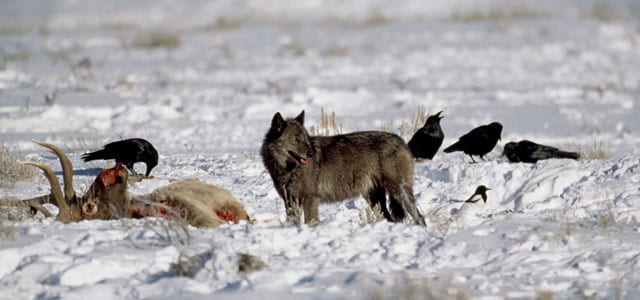Here’s a great all around article about wolves by Liza Gross, just appearing in QUEST, which draws on some of our research in Yellowstone and Alaska.
Though Ecology 101 tells us that healthy ecosystems need top predators, researchers are just beginning to understand how the presence—and absence—of wolves affects other species.One study found that wolves may buffer the effects of climate change in Yellowstone National Park, where winters have been getting shorter, by leaving their moose and elk leftovers for eagles, ravens, coyotes and other scavengers. Another papersuggests that the absence of wolves may explain the precarious status of the Canada lynx. No wolves means more coyotes—which hunt snowshoe hares, the lynx’s favorite food—and more elk and deer—which eat the shrubby vegetation that sustain and shelter hares. And a 2011 paper in Biological Conservation supports earlier work showing that wolves in Yellowstone influence the behavior of deer and elk, releasing grazing pressure on vegetation, which in turn increases songbird habitat and diversity.
Read the full article here.

